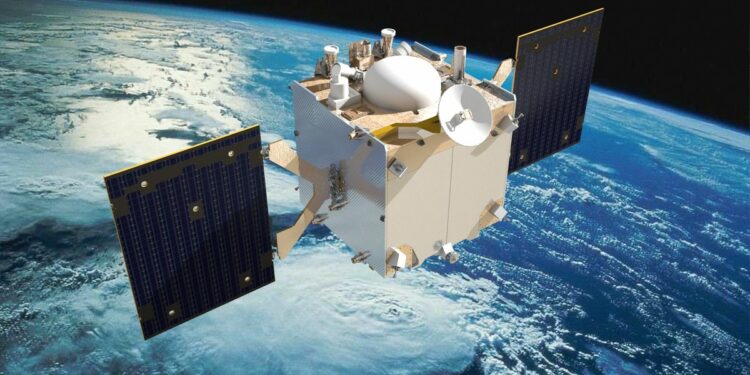Breaking space news, the latest updates on rocket launches, skywatching events and more!
The mission, however, presents an opportunity to study a unique and timely event, as the 1,230-foot-wide (375 meters) Apophis is due to make an exceptionally close pass to Earth in 2029. The asteroid will move inside geostationary orbit and be visible to the naked eye.
“This is not only a fascinating mission for us; it’s also a major milestone of our planet and defense activities,” said Holger Krag, ESA’s Space Safety Program head. “Our goal in the space safety program is to provide warnings of three weeks’ time to notice for all objects of 30-meter [100 feet] size and larger, and to deflect asteroids up to 500-meter [1,650 feet] size, and Apophis is exactly in this size.”
Roberto Aceti, managing director at OHB Italia, says the mission will require a different approach, emphasizing the need for fast and efficient project management to meet the tight timeline.
“There will be a different way to deal with mission risks, because, at the end of the day, the ability to steer the mission development is directly connected to the way you manage risks. And the risk here is delays. If we miss by one week, the asteroid is gone,” Aceti said.
European space officials at the Oct. 17, 2024 signing ceremony that allows phase 1 of development of the Ramses mission to Apophis to go forward. (Image credit: Andrew Jones/Space.com)
ESA Director General Josef Aschbacher and others praised the rapid decision-making and support from member states, which allowed the pragmatic actions and the potential fast development of the Ramses mission.
ESA astronaut Samantha Cristoforetti also voiced support for the mission. “Ramses is an incredible step in progressing in our ability as humanity to take care of ourselves and protect our homeworld,” Cristoforetti said.
Ramses won’t be the only mission potentially visiting Apophis. NASA’s OSIRIS-REx spacecraft, which collected samples from the asteroid Bennu and delivered them to Earth, is on an extended mission — named OSIRIS-APEX — and will arrive at Apophis roughly one month after the asteroid’s Earth flyby.
OSIRIS-REx and Ramses, like Hera and NASA’s Double Asteroid Redirection Test (DART), could be another example of space agencies coming together to develop planetary defense capabilities.
Source link : http://www.bing.com/news/apiclick.aspx?ref=FexRss&aid=&tid=671281765af74336a296ef69f4d36520&url=https%3A%2F%2Fwww.space.com%2Fesa-ramses-mission-asteroid-apophis-2029&c=9687842369125102834&mkt=de-de
Author :
Publish date : 2024-10-18 08:00:00
Copyright for syndicated content belongs to the linked Source.



